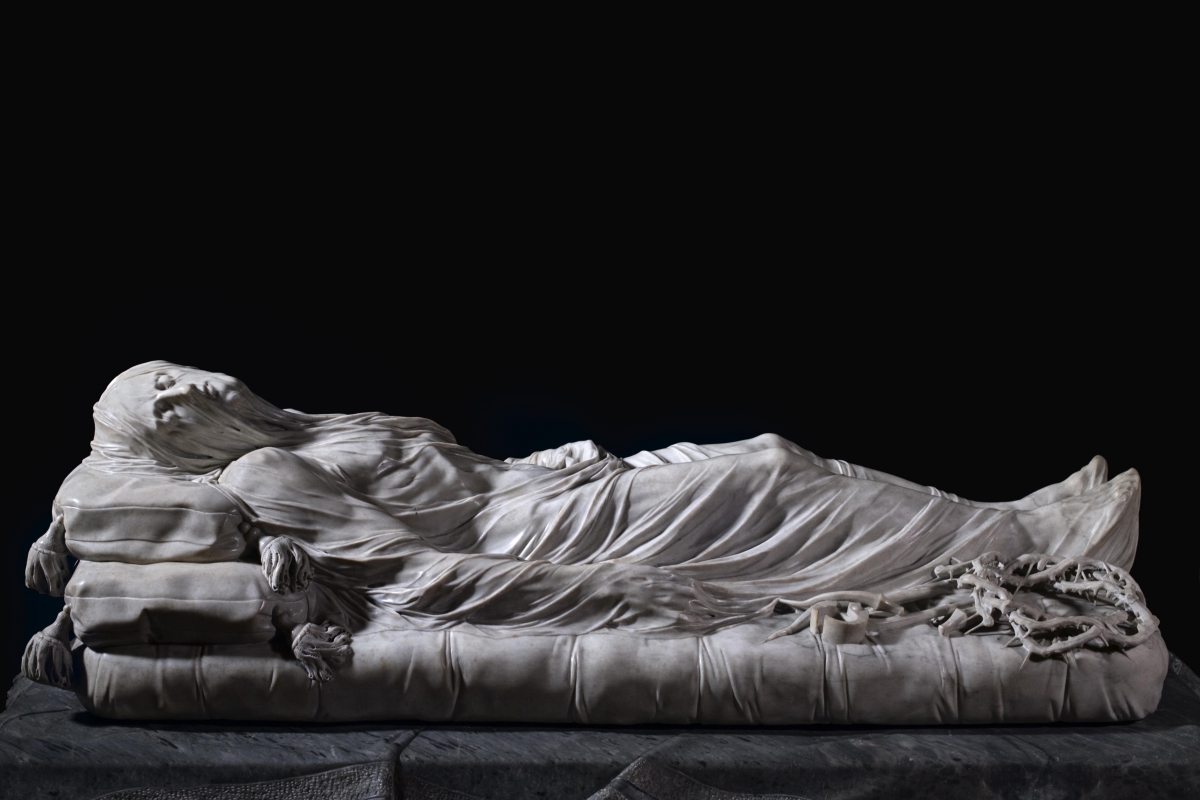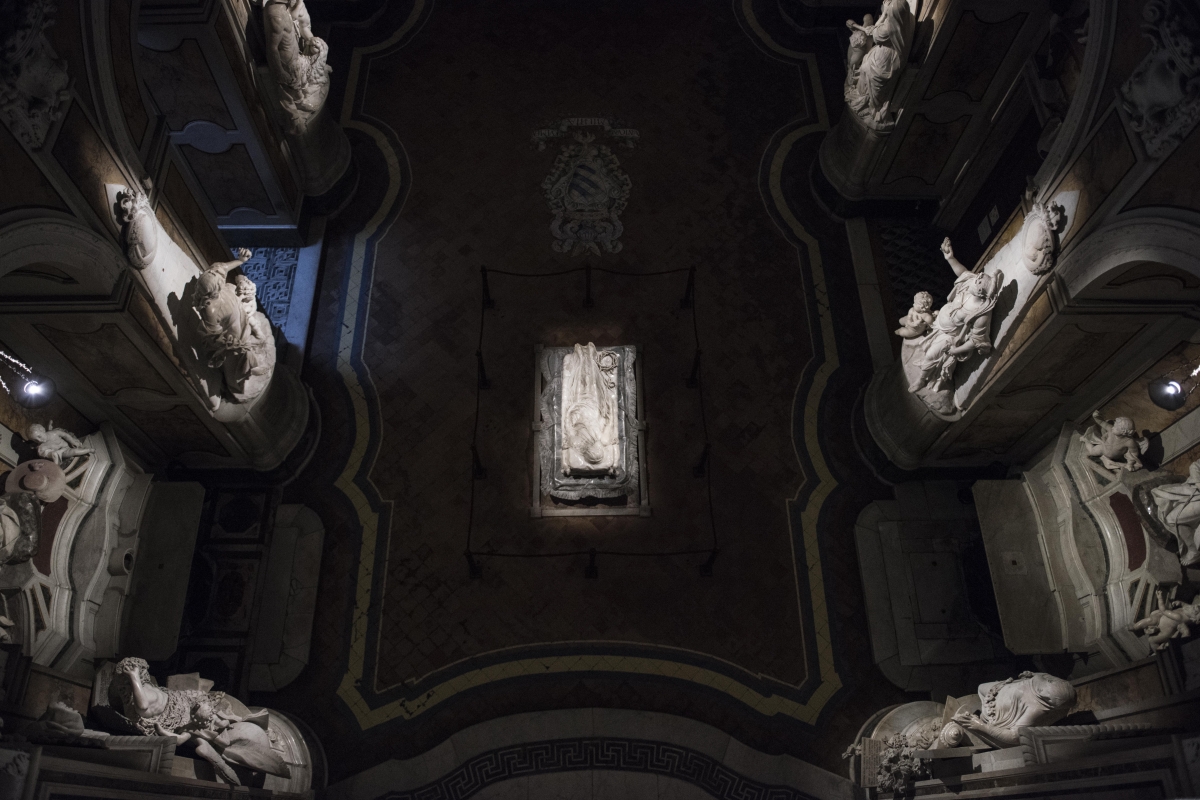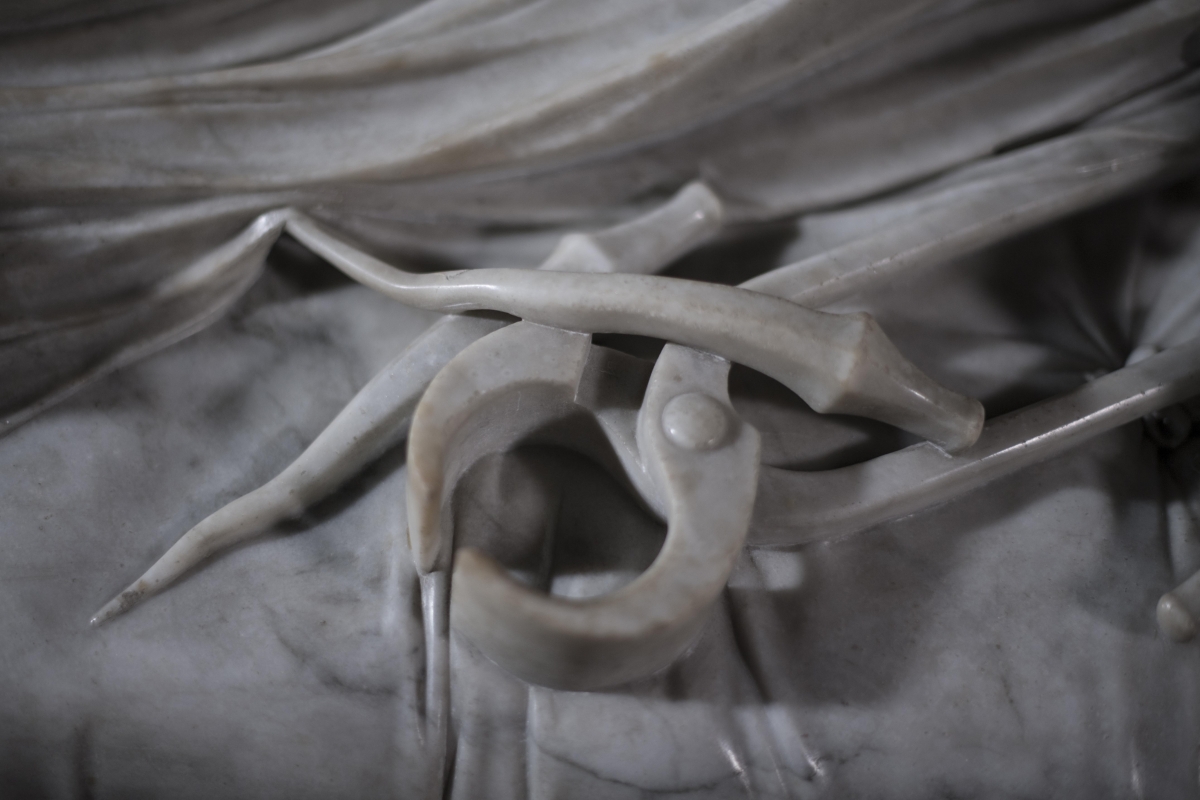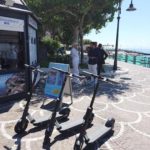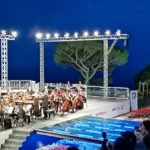SANSEVERO
CHAPEL MUSEUM
SANSEVERO CHAPEL MUSEUM
The Sansevero Chapel Museum in the historic heart of Naples is a jewel of the world’s artistic heritage. Here, baroque creativity, dynastic pride, beauty and mystery blend to create a unique and almost timeless atmosphere. With its masterpieces such as the famous Veiled Christ, renowned world over for the remarkable tissue-like quality of the marble, feats of virtuosity such as Disillusion, and enigmatic creations such as the Anatomical Machines, the Sansevero Chapel is one of the most impressive monuments that the human mind has ever conceived.
A noble mausoleum, a temple of initiation, which admirably reflects the multi-faceted personality of its ingenious architect, Raimondo di Sangro, seventh Prince of Sansevero.
THE VEILED CHRIST
Placed at the centre of the nave of the Sansevero Chapel, the Veiled Christ is one of the most famous and impressive works of art in the world. It was the Prince’s wish that the statue be made by Antonio Corradini, who had already done Modesty for him. However, Corradini died in 1752 and only managed to make a terracotta scale model of the Christ, which is now preserved in the Museo di San Martino.
So Raimondo di Sangro appointed a young Neapolitan artist, Giuseppe Sanmartino, to make “a life-sized marble statue, representing Our Lord Jesus Christ dead, and covered in a transparent shroud carved from the same block as the statue”.
Sanmartino paid little heed to the previous scale model made by the Venetian sculptor. Both in Modesty, and in the Veiled Christ, the original stylistic message is in the veil, but Sanmartino’s late baroque feeling and sentiment permeate the shroud with a movement and a meaning far removed from Corradini’s rules. The modern sensitivity of the artist sculpts and divests the lifeless body of its flesh, which the soft shroud mercifully covers, on which the tormented, writhing rhythms of the folds of the veil engrave deep suffering, almost as if the compassionate covering made the poor limbs still more naked and exposed, and the lines of the tortured body even more inexorable and precise.
The swollen vein still pulsating on the forehead, the wounds of the nails on the feet and on the thin hands, and the sunken side finally relaxed in the freedom of death are a sign of an intense search which has no time for preciosity or scholastic canons, even when the sculptor meticulously “embroiders” the edges of the shroud or focuses on the instruments of the Passion placed at the feet of Christ. Sanmartino’s art here becomes a dramatic evocation, that turns the suffering of Christ into the symbol of the destiny and redemption of all humanity.


